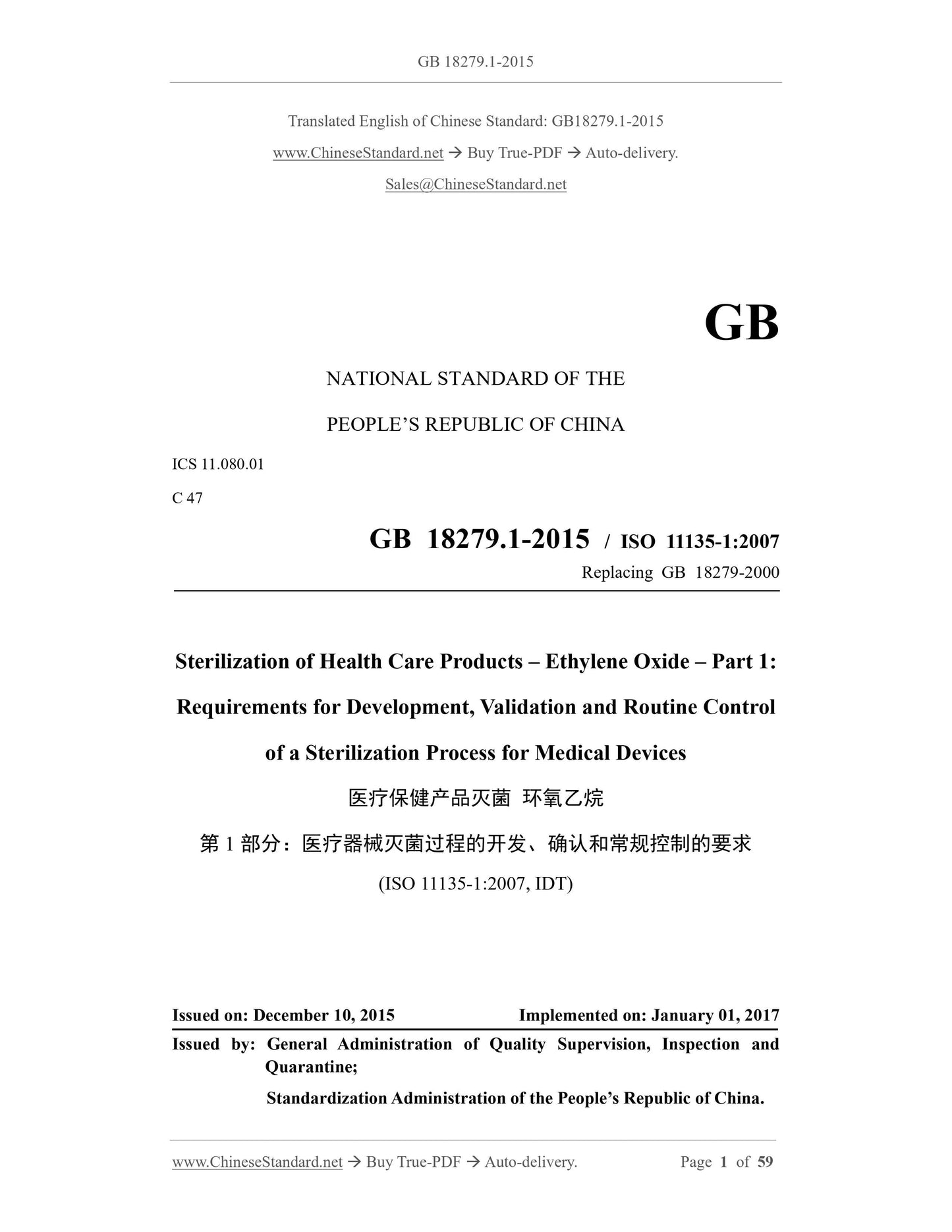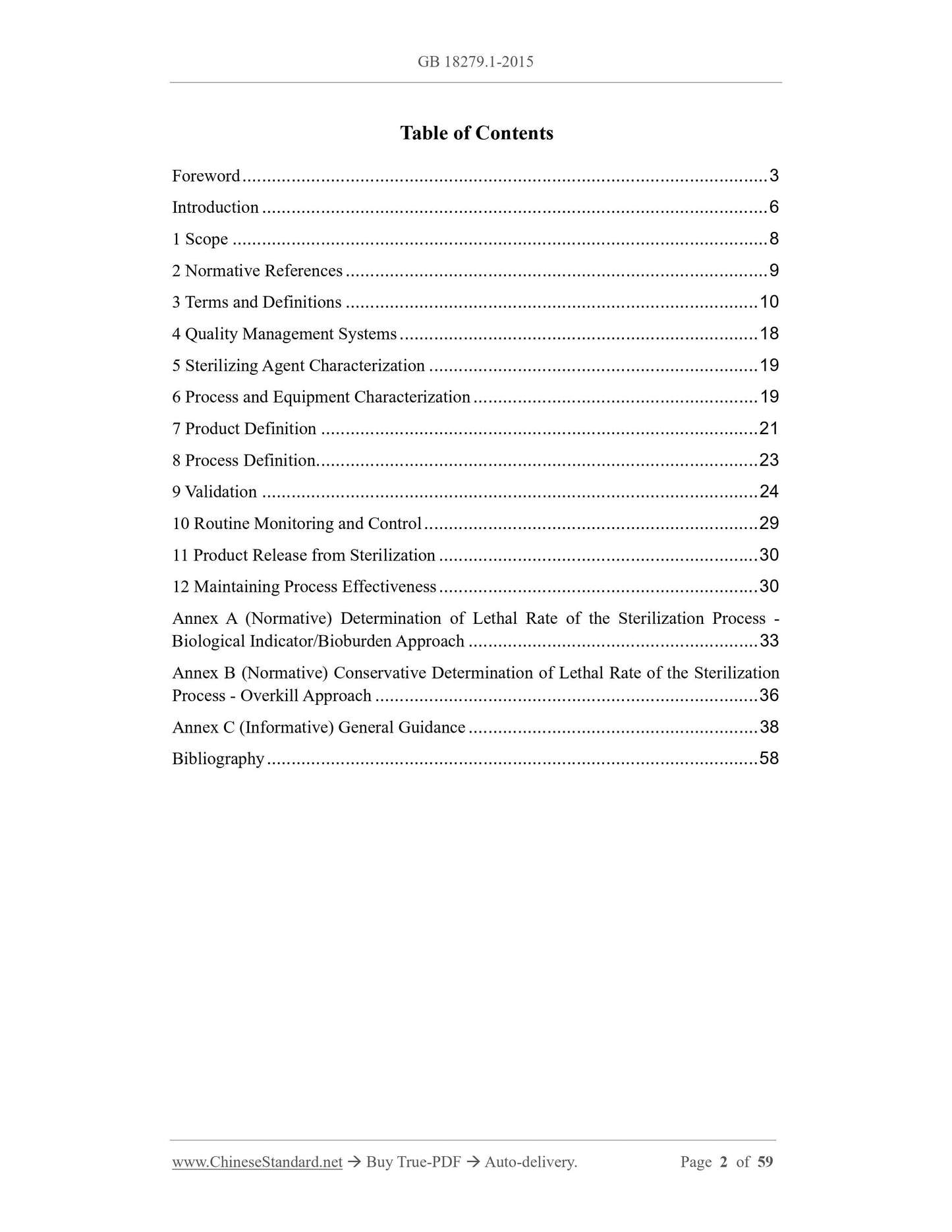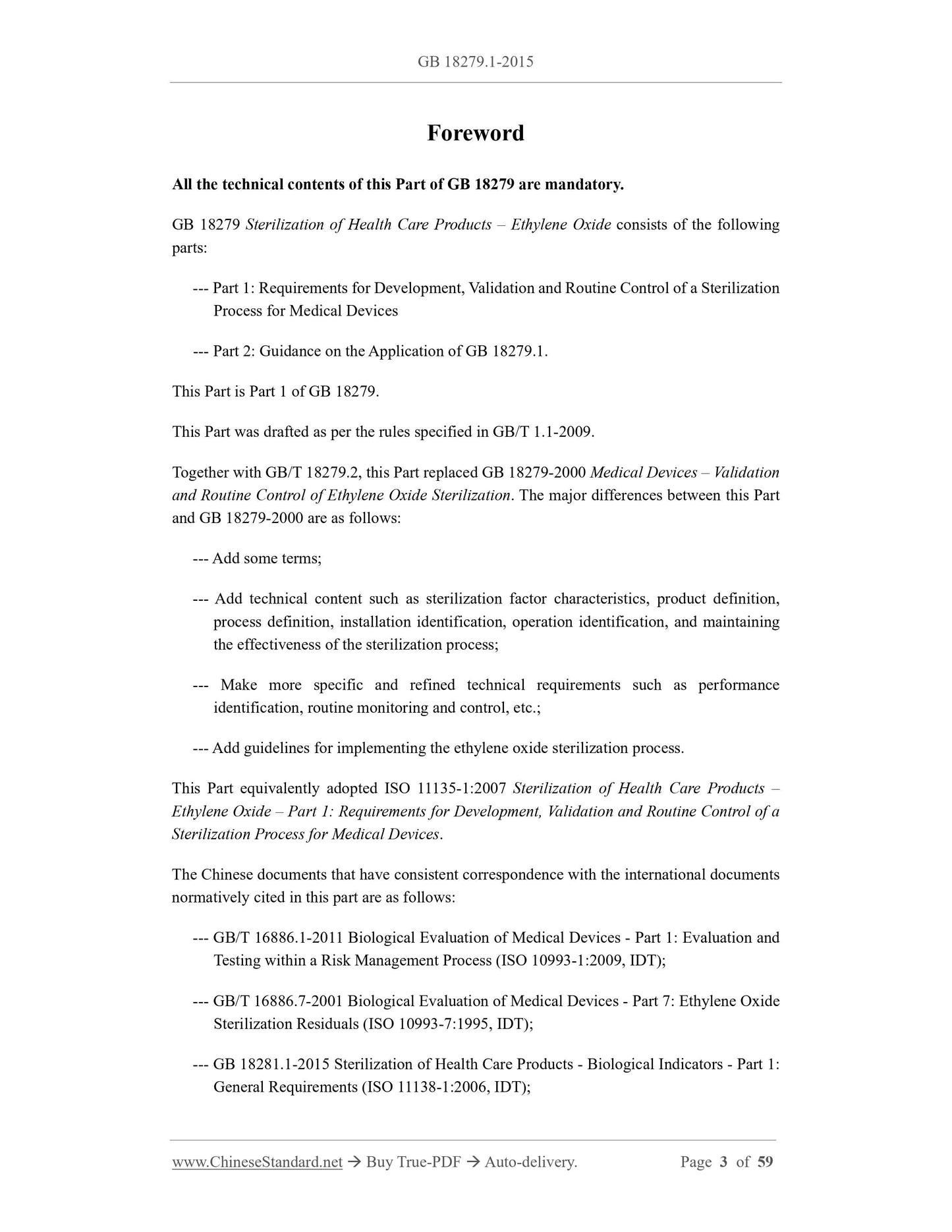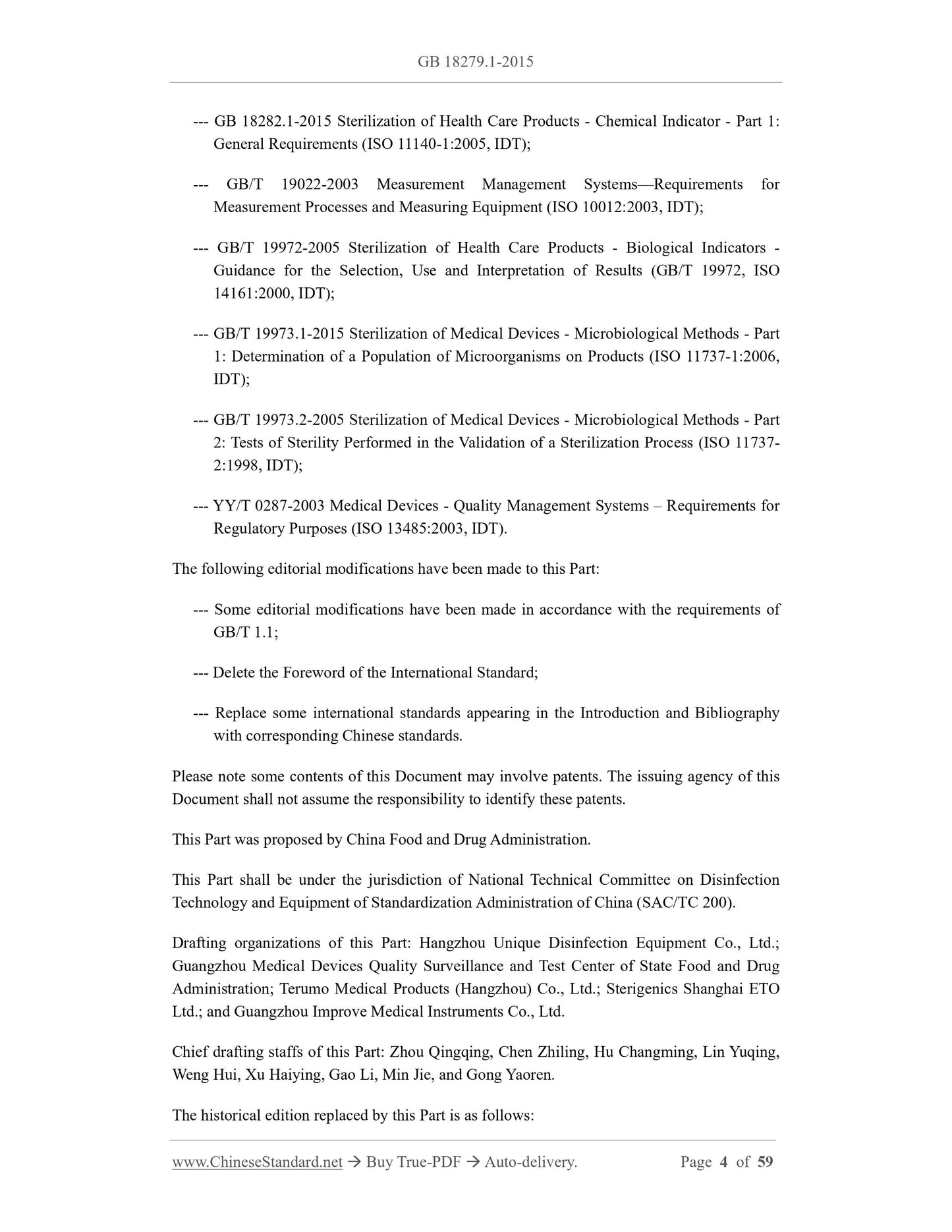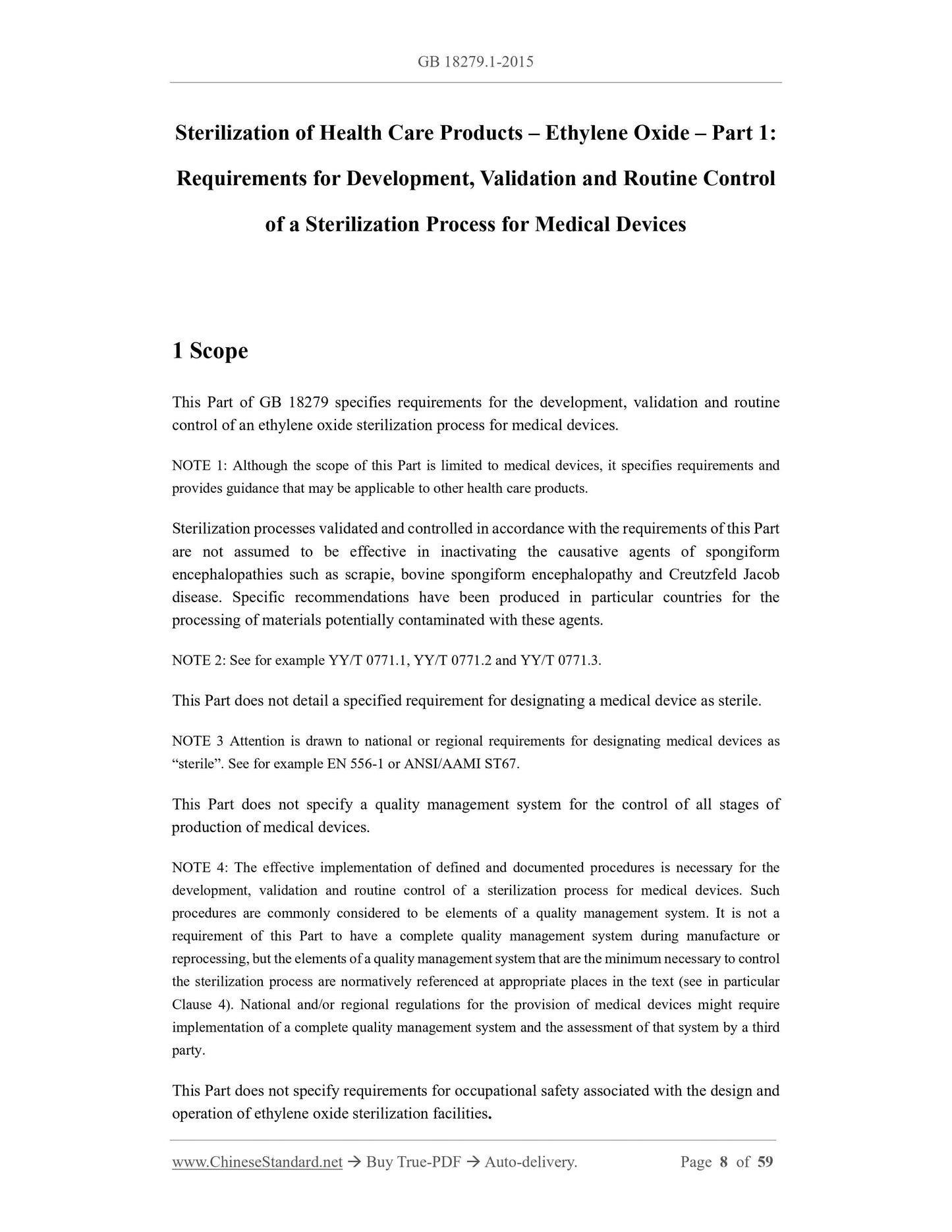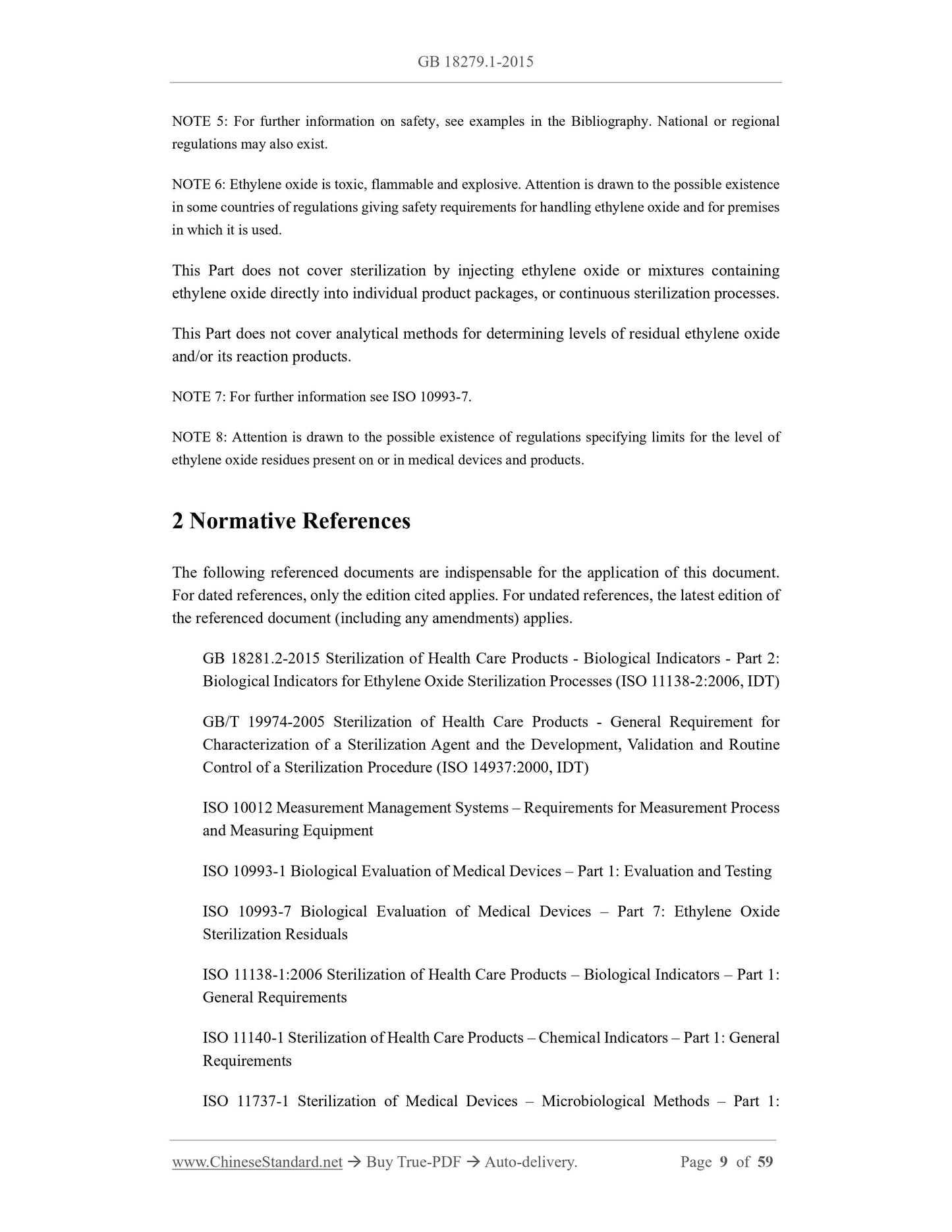1
/
of
6
PayPal, credit cards. Download editable-PDF and invoice in 1 second!
GB 18279.1-2015 English PDF
GB 18279.1-2015 English PDF
Regular price
$555.00
Regular price
Sale price
$555.00
Unit price
/
per
Shipping calculated at checkout.
Couldn't load pickup availability
GB 18279.1-2015: Sterilization of health care products -- Ethylene oxide -- Part 1: Requirements for development, validation and routine control of a sterilization process for medical devices
Delivery: 9 seconds. Download (and Email) true-PDF + Invoice.Get Quotation: Click GB 18279.1-2015 (Self-service in 1-minute)
Newer / historical versions: GB 18279.1-2015
Preview True-PDF
Scope
This Part of GB 18279 specifies requirements for the development, validation and routinecontrol of an ethylene oxide sterilization process for medical devices.
NOTE 1.Although the scope of this Part is limited to medical devices, it specifies requirements and
provides guidance that may be applicable to other health care products.
Sterilization processes validated and controlled in accordance with the requirements of this Part
are not assumed to be effective in inactivating the causative agents of spongiform
encephalopathies such as scrapie, bovine spongiform encephalopathy and Creutzfeld Jacob
disease. Specific recommendations have been produced in particular countries for the
processing of materials potentially contaminated with these agents.
NOTE 2.See for example YY/T 0771.1, YY/T 0771.2 and YY/T 0771.3.
This Part does not detail a specified requirement for designating a medical device as sterile.
NOTE 3 Attention is drawn to national or regional requirements for designating medical devices as
“sterile”. See for example EN 556-1 or ANSI/AAMI ST67.
This Part does not specify a quality management system for the control of all stages of
production of medical devices.
NOTE 4.The effective implementation of defined and documented procedures is necessary for the
development, validation and routine control of a sterilization process for medical devices. Such
procedures are commonly considered to be elements of a quality management system. It is not a
requirement of this Part to have a complete quality management system during manufacture or
reprocessing, but the elements of a quality management system that are the minimum necessary to control
the sterilization process are normatively referenced at appropriate places in the text (see in particular
Clause 4). National and/or regional regulations for the provision of medical devices might require
implementation of a complete quality management system and the assessment of that system by a third
party.
This Part does not specify requirements for occupational safety associated with the design and
operation of ethylene oxide sterilization facilities.
NOTE 5.For further information on safety, see examples in the Bibliography. National or regional
regulations may also exist.
NOTE 6.Ethylene oxide is toxic, flammable and explosive. Attention is drawn to the possible existence
in some countries of regulations giving safety requirements for handling ethylene oxide and for premises
in which it is used.
This Part does not cover sterilization by injecting ethylene oxide or mixtures containing
ethylene oxide directly into individual product packages, or continuous sterilization processes.
This Part does not cover analytical methods for determining levels of residual ethylene oxide
and/or its reaction products.
NOTE 7.For further information see ISO 10993-7.
NOTE 8.Attention is drawn to the possible existence of regulations specifying limits for the level of
ethylene oxide residues present on or in medical devices and products.
Basic Data
| Standard ID | GB 18279.1-2015 (GB18279.1-2015) |
| Description (Translated English) | Sterilization of health care products -- Ethylene oxide -- Part 1: Requirements for development, validation and routine control of a sterilization process for medical devices |
| Sector / Industry | National Standard |
| Classification of Chinese Standard | C47 |
| Classification of International Standard | 11.080.01 |
| Word Count Estimation | 39,389 |
| Date of Issue | 2015-12-10 |
| Date of Implementation | 2017-01-01 |
| Older Standard (superseded by this standard) | GB 18279-2000 |
| Quoted Standard | GB 18281.2-2015; GB/T 19974-2005; GB/T 19022-2003; GB/T 16886.1-2011; GB/T 16886.7-2001; GB 18281.1-2015; GB 18282.1-2015; GB/T 19973.1-2015; GB/T 19973.2-2005; YY/T 0287-2003; GB/T 19972-2005 |
| Adopted Standard | ISO 11135-1-2007, IDT |
| Regulation (derived from) | National Standard Announcement 2015 No.38 |
| Issuing agency(ies) | General Administration of Quality Supervision, Inspection and Quarantine of the People's Republic of China, Standardization Administration of the People's Republic of China |
| Summary | This standard specifies the development of medical devices ethylene oxide sterilization process, validation and routine control. In accordance with the requirements of this standard and to confirm the sterilization process control can not be inferred to be effective inactivation of pathogenic factors spongiform encephalopathy, such as scrapie, bovine spongiform encephalopathy and Creutzfeldt-Jakob disease. Some countries have developed detailed recommendations deal with possible contaminants by such factors. This standard does not detailing marked as sterile medical instruments specific requirements. The standard does not specify all the stages of production of medical devices for the control of the quality management system. This standard does not specify with ethylene oxide sterilization facility design and operation-related occupational safety requirements. This standard does not include ethylene oxide or mixtures containing ethylene oxide sterilization is directly injected into a single product packaging, or continuous sterilization process. This standard does not include a determination of ethylene oxide and/or analysis of the reaction product residue levels. |
Share
